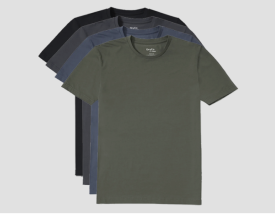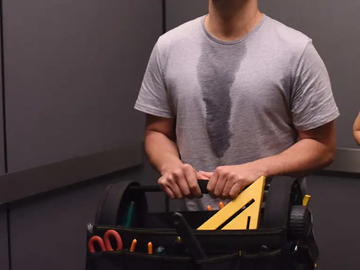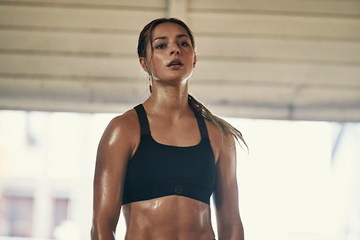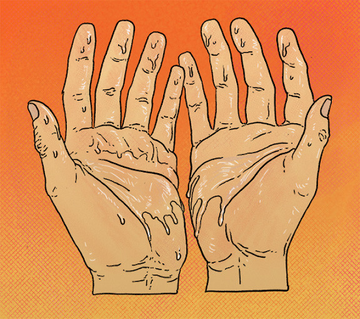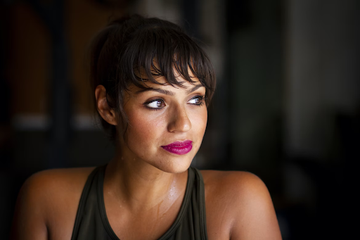Just about anyone can wear moisture-wicking fabrics but some of us need them more than others. We’re talking about the folks who sweat a lot, for whatever reason, whether it’s due to their biology or their lifestyle. Moisture-wicking fabrics are heavenly for those who sweat too much because of their ability to pull sweat from the body so that it evaporates. This post will take a look at the various groups of “sweaty” people who should wear moisture-wicking fabrics and why.
Hyperhidrosis Sufferers
If you’ve been diagnosed with hyperhidrosis, your doctor has probably given you the spiel on treatment. They probably recommended you take antiperspirants or medications, or even more potent treatments such as botox. Although they provide relief, moisture-wicking fabrics are natural, non-medicinal “hack” you can rely on to stay dry when the sweats come on.
Moisture-wicking fabrics belong in every hyperhidrosis’ sufferer’s closet (and drawers). Through the process of capillary action, they pull sweat from the body through tiny holes called micropores up onto the surface of the fabric.
Once the sweat is on the surface, heat evaporates the sweat so that the shirt doesn’t remain wet. That means sufferers feel and look dry faster than they would if they wore other materials such as moisture-absorbing or plain old breathable fabrics.
With that said, some hyperhidrosis sufferers will find more benefits with using moisture-wicking fabrics than others. If you suffer from severe or extreme hyperhidrosis (using the HDSS can help you figure this out), then moisture-wicking fabrics are a must-have for sweat-management arsenal.
Also, if you work a job that’s client or customer-facing in nature (more on this later), then wearing moisture-wicking fabrics will come in handy. They’ll keep you looking and feeling dry so that it’s not a distraction to a customer or client, and you won’t feel self-conscious in front of them. Not feeling self-conscious will do wonders for your confidence.
Athletes, Fitness Enthusiasts & Hikers
Whether you’re a weekend warrior, an elite athlete or some sort of fitness buff, it’s fair to say that sweating is something you’ve learned to live with. The extent to which you sweat and how you handle it matters though.
For athletes, sweating isn’t a problem really because it’s an essential cooling mechanism to help prevent heat exhaustion. It can be distracting, however, if you’re sweating so much that it makes you feel sticky or you notice others looking at you (ie. getting stares from less sweaty people).
Moisture-wicking fabrics come in handy for athletes and fitness buffs who sweat a lot. They don’t make you sweat less (you’d need an antiperspirant for that), but they help you cool and dry off fast. The benefit of this is that you won’t feel or look drenched, so that even a heavy bout of sweating won’t feel so bad (or embarrassing).
For hikers, moisture-wicking fabrics take on a greater importance, especially in climate/weather extremes. Very high temperatures will make hikers sweaty, and even rigorous movement in cold weather can make one sweat and feel damp due to wintry temperatures. When it comes to hiking, comfort is king. This is especially true when you’re hiking on long excursions and in unfavourable or rapidly-changing temperatures. Again, moisture-wicking fabrics pull and repel sweat so that you’re not soaking and feeling miserable throughout the entire hike.
Labour-Intensive Professions
Some jobs are dirty, physical and above all, sweaty, no matter how active or inactive your sweat glands are. You can probably figure out what jobs they are - they usually involve heavy lifting, fast-paced movement, working with machinery and more. Some of these jobs include the likes of:
- Construction
- Medical
- Mechanical
- Factory
- Emergency
Again, the main consequence of heavy sweating at work is getting distracted. But sweat can distract you severely enough to the point where you are not productive or worse, overlooking your safety (which is never a good thing). So the best thing you can do is reduce the feeling and appearance of being sweaty.
Moisture-wicking fabrics can easily go underneath uniforms, scrubs, PPE and other work-gear that’s commonly required for labour-intensive jobs. They wick away sweat so that you can stay cool and dry at work, so that you’re not overly distracted by the sensation of being sweaty. You can then focus on the job at hand.
Recap of the Best Moisture-Wicking Fabrics
With all of that said, you might need a crash course or reminders on what the best moisture-wicking fabrics are. After all, not all fabrics are made equal. Choosing the best moisture wicking fabrics for you can help you not only feel and look dry, but also help you feel more comfortable and perform better as well.
Best Moisture-Wicking Fabrics
Moisture-Wicking Fabrics & Sweaty People Belong Together
One thing to keep in mind is that you don’t have to buy just one moisture wicking fabric. You can buy a few of the ones that interest you based on their unique properties, or better yet, you can buy sweat proof clothing that contains a blend of these fabrics.
For example, our line of NEAT sweat proof undershirts contain a blend of different fabrics, giving you a balance of moisture-wicking ability, comfort, durability, breathability and much more.
All of these features make sweating easier to handle. The less of a distraction sweat is, the more enjoyment you can get out of your daily routine and hobbies.
Interested in learning more about sweat proof shirts? Take a look at our NEAT fabric technology and how it helps you stay and look dry, faster.
